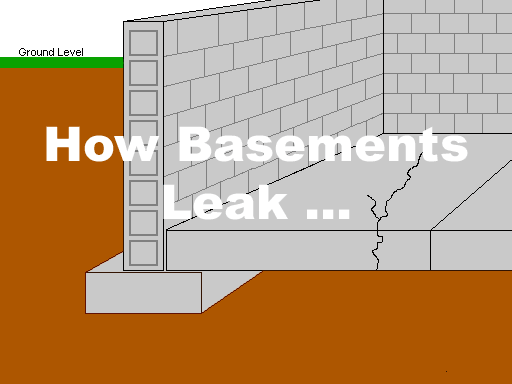For anyone with a basement, the fear of it getting flooded might be something that you worry about constantly. After all, many of  us use our basements to store memorabilia and things we feel a strong emotional attachment to. Others will be using the basement as a spare room, and as a place for someone to live in if they have to; whatever you decide to do with the basement, though, you need to look after it in the right manner. Basements, if they manage to become damaged or flooded, can be a massive expense to get fixed up.
us use our basements to store memorabilia and things we feel a strong emotional attachment to. Others will be using the basement as a spare room, and as a place for someone to live in if they have to; whatever you decide to do with the basement, though, you need to look after it in the right manner. Basements, if they manage to become damaged or flooded, can be a massive expense to get fixed up.
Should you ever be the victim of a flood, one term that you are likely to hear from the experts is something known as hydrostatic pressure or in this case, negative hydrostatic pressure. This can sound like something extremely complicated, but in its most basic form this is when the water pressure becomes too much for your basement and effectively comes through the walls. This can happen through a variety of reasons, from a long period of torrential downpour to a lack of drainage for the basement area to avoid this problem from occurring. Ultimately, if you have a foundation underground, it is important to know about hydrostatic water pressure basement solutions.
Typical footing drains won’t be sufficient as a hydrostatic water pressure basement solution because they can become clogged up and full thanks to plant roots growing within them. This issue starts to build negative hydrostatic pressure around the basement, which will eventually lead to a pretty vicious basement leak occurring. With a pressure of roughly 60 pounds per cubic foot, the levels of pressure being forced onto the basement foundations is absolutely incredible, which is why waterproof systems are important to have in place.
After heavy rainfall, no waterproof system in place, and enough prolonged build-up of wet soil, you could be looking at tens of thousands of pounds worth of pressure.
What happens when no waterproof system is in place is that whilst the basement will hold for now, even the smallest crack or chip in the foundations could cause an almighty flood to occur. It will work in the same way as the proverbial dam; as soon as one part breaks away, the rest of it will soon follow. Water pressure in a basement without a waterproof system forces itself in and finds a leak until it can just release and pour out; there’s no way to stop it, even with the most robust design possible in a basement.
Traditional wisdom says the only way to stop the problem is to release this negative hydrostatic pressure as effectively as you can – typically, working with a team of basement renovation experts to help you waterproof your basement. Usually they will use various hydrostatic water pressure basement solutions such as drains, and sumps pumps.
The Sani-Tred Solution Stop Negative Hydrostatic Pressure
San-Tred products can withstand many more times the pressure that occurs in a basement. Permanently waterproof your basement this week! The waterproofing solution trusted by over 100,000 customers. Scientifically proven to permanently waterproof your basement. We offer mini sample packs with a Double Your Money Back Guarantee. Our products our 99% effective at preventing harmful Radon Gas from entering foundations.
Our products are safe, solvent free, non-flammable, and low VOC We provide detailed instructions and phone support to apply our products like a pro. Product comes with a lifetime warranty call 1-866-784-3308 or check out our Basement Waterproofing Product page to learn more about how to fix hydrostatic pressure in basements with SANI-TRED.

Nice!